With aisles full of specialty sprays, scrubs, and gimmicky gadgets, it’s easy to spend a small fortune on cleaning supplies that barely do more than what you already have at home. The truth is, many of these products are overpriced, unnecessary, or just plain ineffective. In fact, some can even make your cleaning routine more complicated than it needs to be. By cutting out the clutter and sticking to a few tried-and-true basics, you can save money, time, and storage space. Ready to simplify your cleaning cabinet? Here are 13 cleaning products you should stop wasting money on.
1. Clorox Wipes
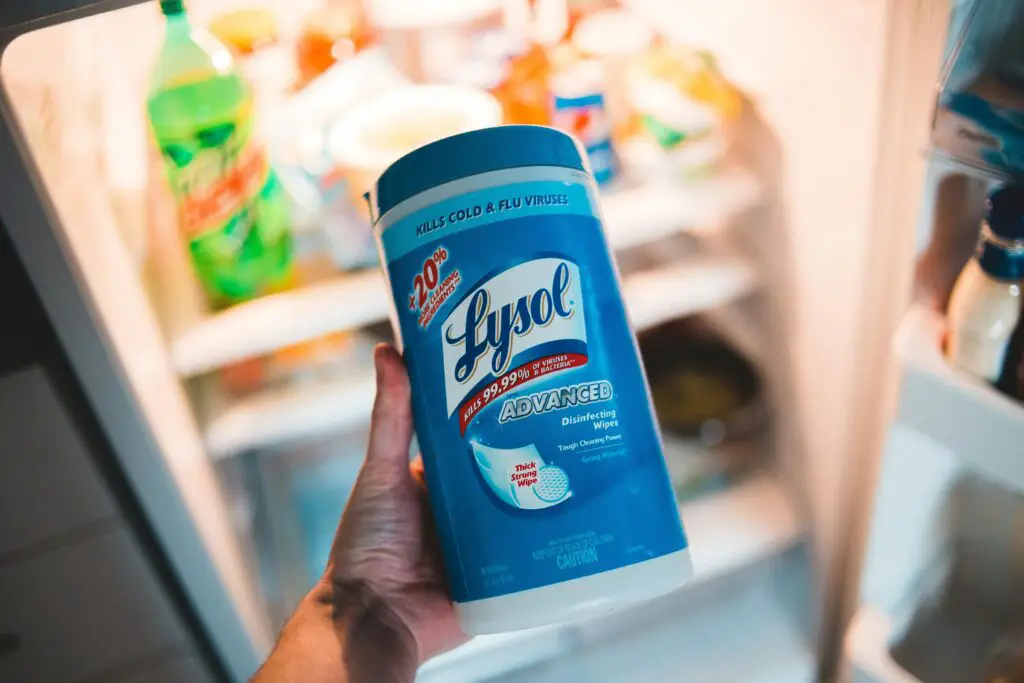
Clorox wipes are popular for their convenience, but they come at a premium price. They’re also not always used properly—Forbes points out that to effectively disinfect a surface, the area must remain wet for at least four minutes, which many people don’t do. These wipes are single-use and generate a lot of unnecessary waste, especially in busy households. And overuse can irritate skin or trigger allergies due to harsh chemicals.
You can make your own disinfectant wipes using paper towels or reusable cloths soaked in a solution of alcohol or vinegar. This method is both budget-friendly and more sustainable. For day-to-day cleaning, a spray bottle and cloth are often faster and more effective. You’ll get the same level of cleanliness without burning through your budget—or contributing to landfill waste.
2. Disposable Toilet Brushes
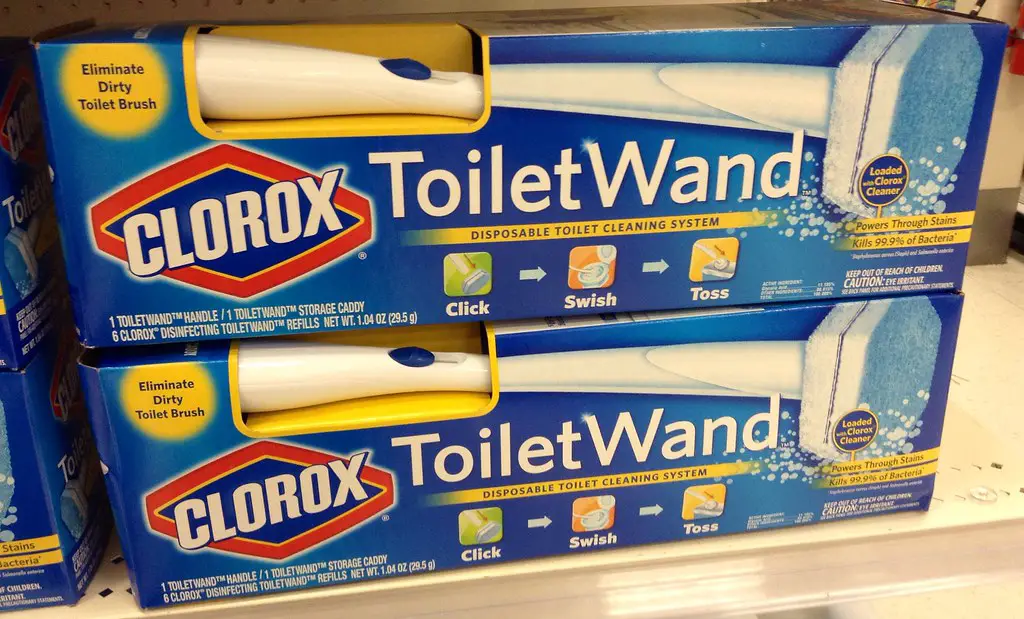
Disposable toilet brushes might look like a more sanitary option, but they often fall short when it comes to scrubbing power and longevity. According to Good Housekeeping, traditional toilet brushes are more effective at removing tough stains and can be sanitized with ease. The disposable versions are also expensive in the long run and contribute to unnecessary plastic waste. Their limited lifespan means you’ll be buying refills constantly, driving up costs.
You can switch to a silicone toilet brush or a classic stiff-bristled one with a holder that allows for proper drying and cleaning. These options are both more eco-friendly and cost-efficient. Regularly disinfecting your brush with bleach or vinegar keeps it sanitary without the need to toss it. Investing in a good-quality reusable tool saves you money and reduces household waste.
3. Expensive Glass Cleaners
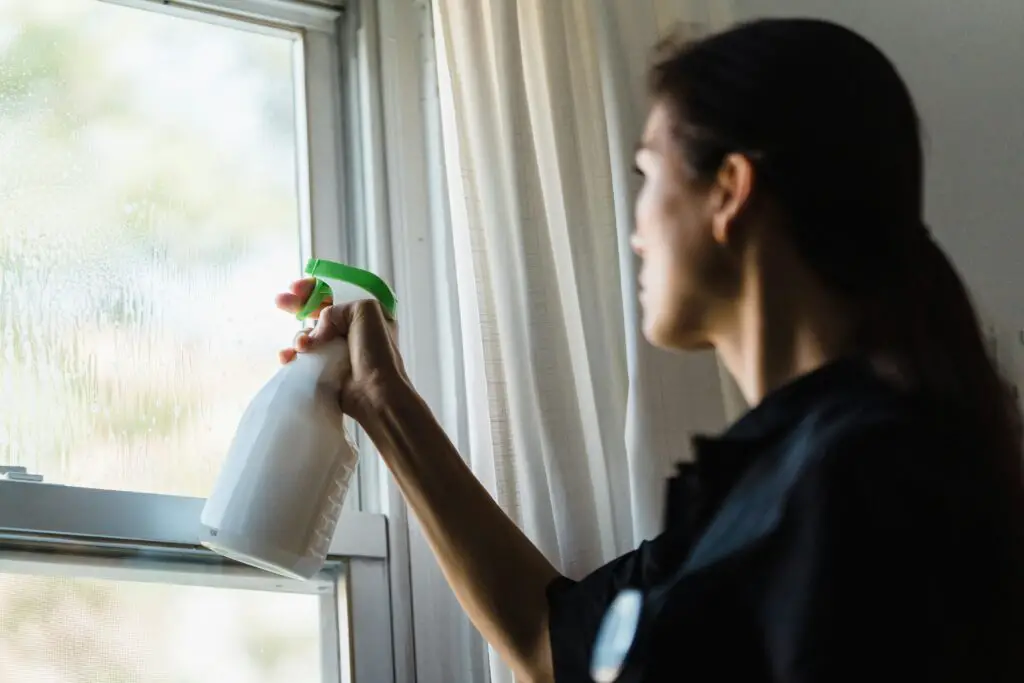
High-end glass cleaners may promise a streak-free finish, but many fail to outperform basic homemade alternatives. A simple solution of vinegar and water cleans just as well as many name-brand glass cleaners. In fact, some commercial cleaners leave behind residues that attract more dust and smudges. You’re essentially paying extra for branding and packaging.
Instead, fill a spray bottle with equal parts white vinegar and water for a DIY cleaner that works wonders. Use a microfiber cloth for a lint-free shine, which Forbes recommends for best results. Not only is this solution effective, but it’s also non-toxic and incredibly affordable. It’s an easy swap that can reduce both your household spending and chemical use.
4. Air Fresheners
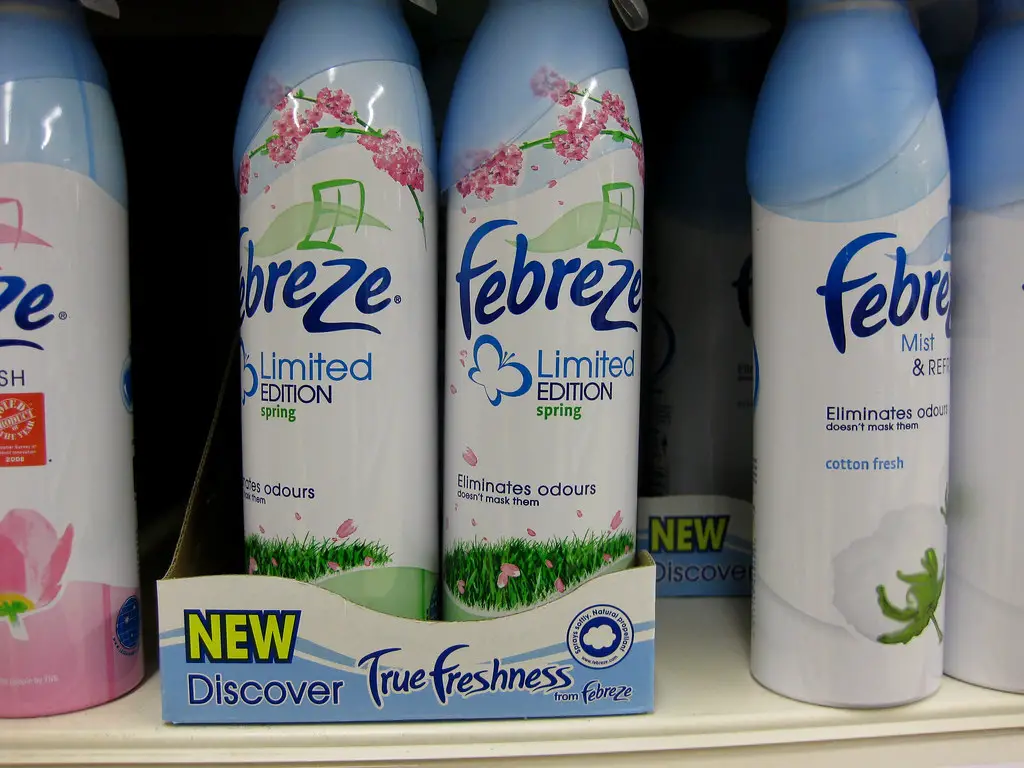
Air fresheners might make a room smell nice temporarily, but they don’t actually clean the air or eliminate the source of odors. According to the Environmental Working Group (EWG), many plug-ins and sprays contain potentially harmful chemicals like phthalates and formaldehyde. These substances can irritate the respiratory system, especially for people with asthma or allergies. In short, you’re often paying to mask a problem, not solve it.
A better approach is to identify and eliminate the source of the odor. Baking soda is an excellent odor absorber, and essential oil diffusers can provide fragrance without harsh chemicals. Natural options like simmering citrus peels are better, or use indoor plants for fresher air. These methods are healthier, longer-lasting, and far more cost-effective.
5. Specialty Hardwood Floor Cleaners

Many specialty hardwood cleaners are expensive and not always necessary for maintaining clean, shiny floors. Most hardwood floors can be safely cleaned with a mild solution of dish soap and water. As long as the mop is wrung out well, there’s minimal risk of water damage. The key is using gentle ingredients and avoiding harsh chemicals that strip the floor’s finish.
Save money by skipping name-brand hardwood cleaners and opting for DIY solutions. A few drops of dish soap in a bucket of warm water work just as well for routine cleaning. For shine, a tiny bit of white vinegar diluted in water can help lift grime. Always follow up with a dry cloth or mop to prevent moisture buildup.
6. Furniture Polishes

Commercial furniture polish often contains waxes and silicones that can build up on surfaces and dull your furniture over time. These polishes may also leave behind a residue that attracts more dust. Instead of truly cleaning, they often just coat the surface. Some can even degrade wood finishes if used too frequently.
A better and cheaper alternative is a mix of olive oil and vinegar. This simple solution can clean and nourish wood without leaving a sticky film. Apply lightly with a cloth and buff gently for a natural sheen. It’s an eco-friendly and budget-conscious way to maintain your furniture.
7. Single-Use Dusters
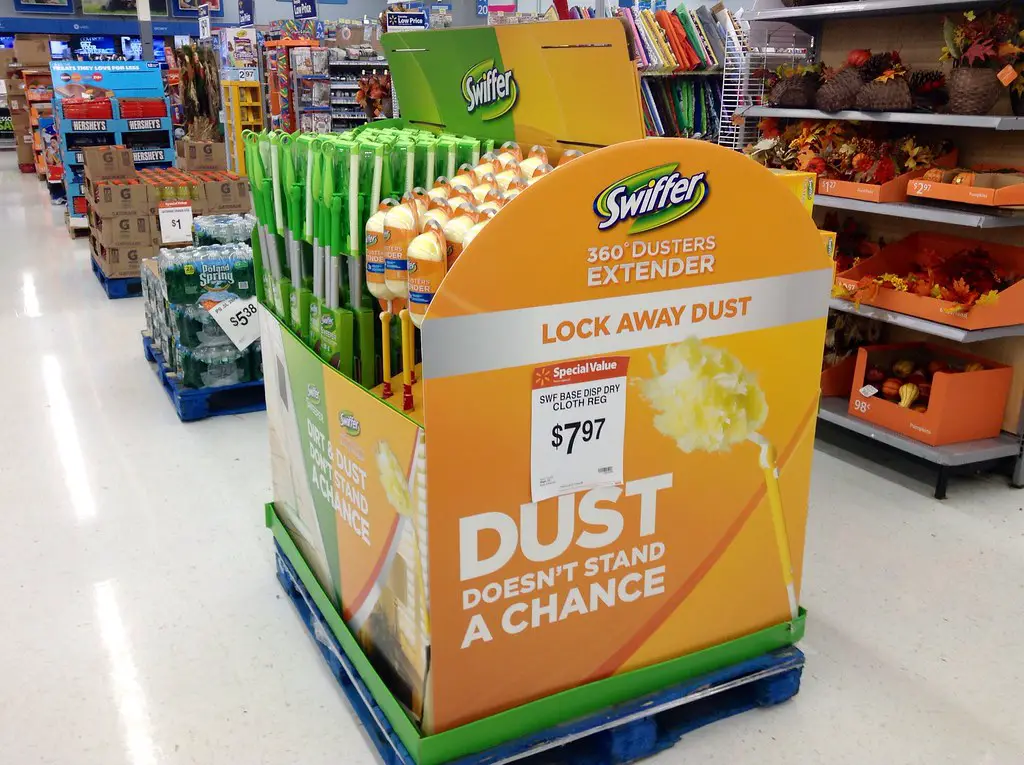
Single-use dusters like those from Swiffer may seem like a quick fix, but they cost more over time and end up in landfills. They also don’t hold as much dust as reusable microfiber cloths or washable dusters. After just a few uses, you’re already spending more than you would for a permanent cleaning tool. The cost and waste add up quickly.
Instead, invest in a high-quality microfiber duster or mitt that can be washed and reused. Microfiber traps dust more effectively than disposable alternatives. Wash it with your laundry and use it for years. It’s a one-time purchase that cuts down on waste and clutter.
8. Oven Cleaners
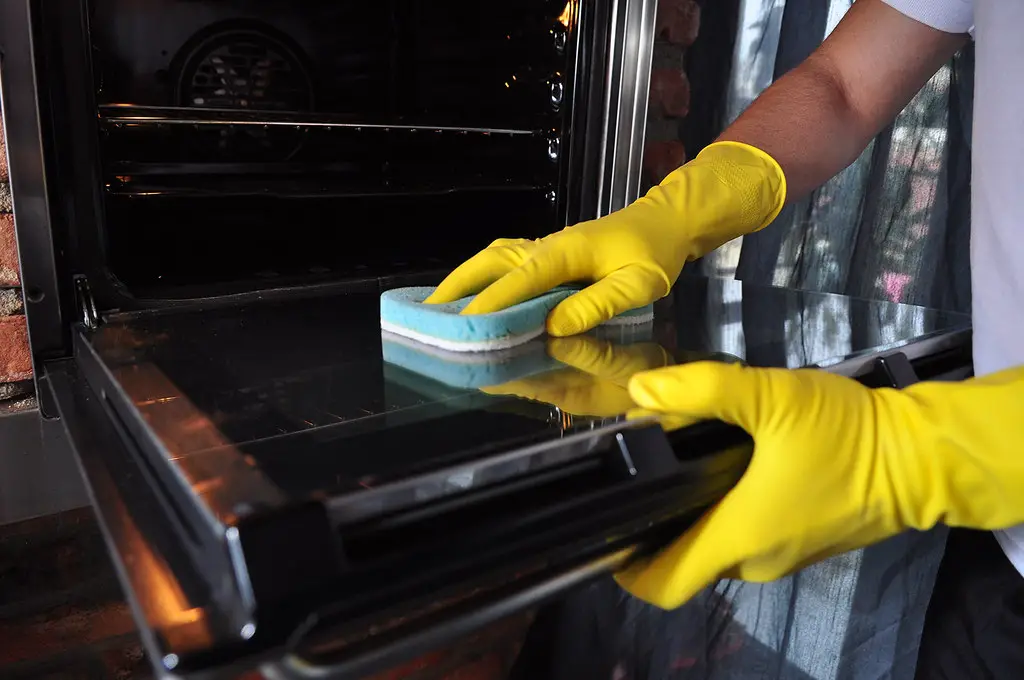
Oven cleaners often rely on extremely harsh chemicals that can irritate your lungs and skin. They’re also expensive, considering how rarely most people deep clean their ovens. The fumes can be dangerous, especially in enclosed spaces. Despite the high cost, these products don’t always deliver better results than homemade methods.
Try a safer approach with baking soda, vinegar, and water. Create a paste with baking soda and water, apply it to the interior, and let it sit overnight. The next day, spray with vinegar and wipe clean. This method is gentle, effective, and costs just pennies.
9. Multi-Surface Cleaners

Multi-surface cleaners are marketed as do-it-all products, but they rarely excel at any one task. Many are too weak to cut through grease in the kitchen or too harsh for delicate surfaces. Instead of buying multiple bottles for each room, make your own targeted cleaners. It’s cheaper and more effective.
For example, vinegar and dish soap make a great bathroom cleaner, while baking soda can scrub kitchen surfaces. You control the ingredients, so there’s no risk of unnecessary chemicals. Keeping a few DIY solutions on hand can reduce clutter and streamline your routine. Plus, they’re safer for pets and kids.
10. Bleach for Cleaning
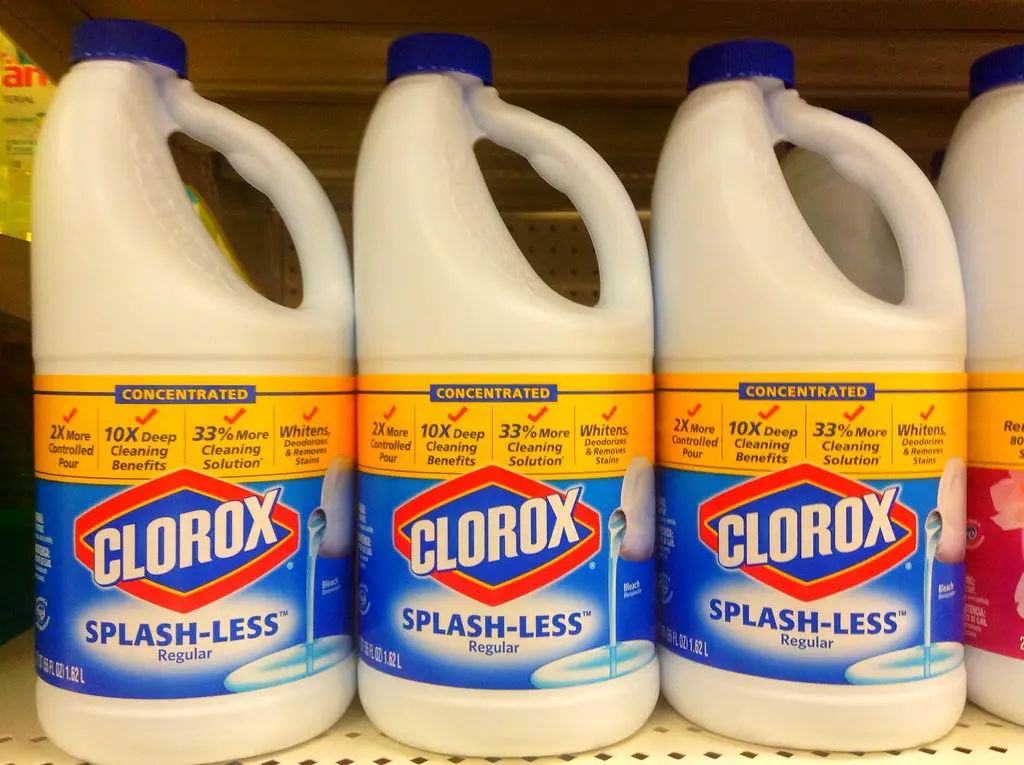
Bleach is often overused as a general-purpose cleaner when it’s really best reserved for sanitizing bathrooms or laundry. It’s harsh, caustic, and can cause long-term damage to surfaces and fabrics. In many cases, it’s unnecessary and potentially harmful to your health. Its fumes are also dangerous in poorly ventilated areas.
Instead, use hydrogen peroxide or vinegar for most cleaning needs. They disinfect without the same level of toxicity and are much safer for daily use. Baking soda also works well for scrubbing and deodorizing. With these alternatives, you can clean effectively without the risks.
11. Furniture Stain Removers
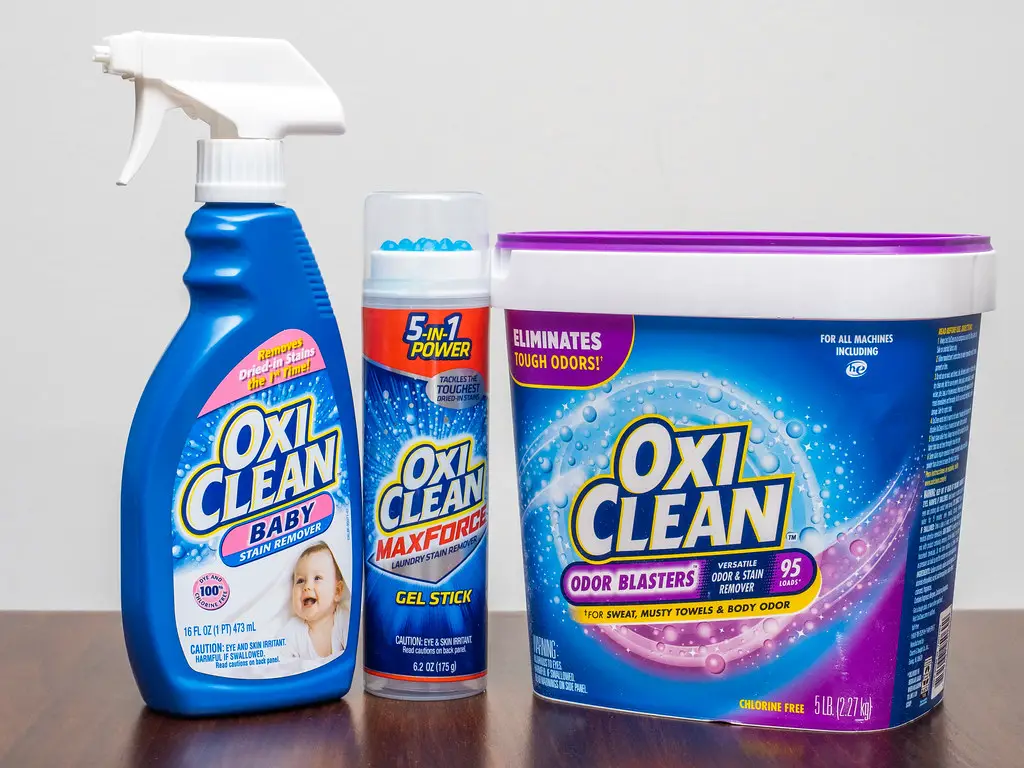
Furniture stain removers can be expensive and inconsistent. Many are designed for specific fabrics and don’t work universally. Others simply move the stain around or make it worse. You’re better off trying a basic DIY solution first.
Start with warm water and mild dish soap for most stains. For tougher spots, try a little vinegar or a paste made from baking soda. Blot instead of scrubbing to avoid spreading the stain. In many cases, these natural solutions work just as well as pricey stain removers.
12. Washing Machine Cleaners
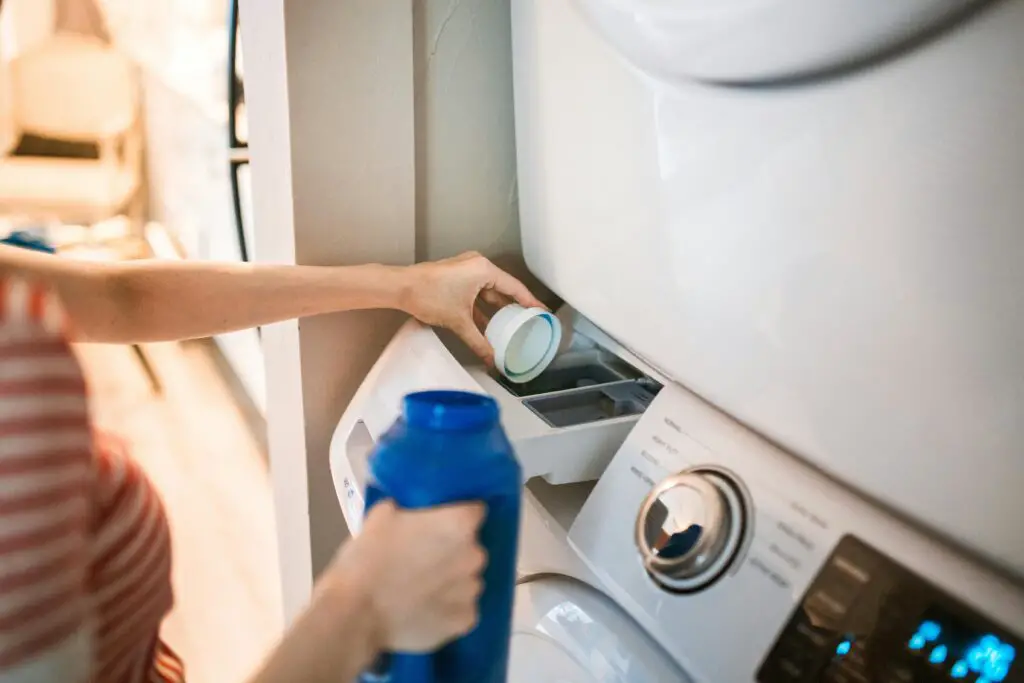
Store-bought washing machine cleaners can be pricey and aren’t always necessary. Your washing machine needs regular maintenance, but that doesn’t mean it requires commercial cleaning tablets. These products often contain ingredients you already have at home. Many also fail to address mold or mildew in hidden areas.
Run a hot cycle with white vinegar and baking soda to clean your washer thoroughly. Scrub around the rubber seal and detergent tray for a deeper clean. This method is effective at eliminating odors and buildup. It also saves money and cuts down on chemical exposure.
13. Disinfectant Sprays
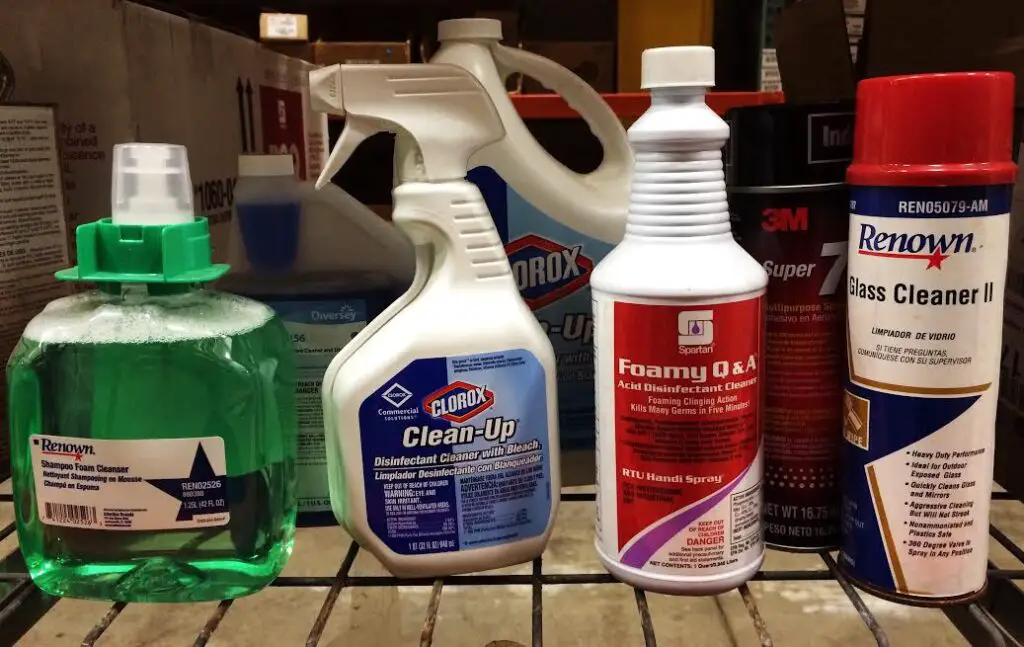
Disinfectant sprays are often misused and misunderstood. Many people spray and wipe immediately, not realizing the product needs to sit for several minutes to kill germs. This leads to a false sense of cleanliness. You’re paying for a product that might not be doing what you think it is.
Natural alternatives like hydrogen peroxide, rubbing alcohol, and tea tree oil can disinfect when used correctly. These ingredients are often cheaper and safer. Just be sure to let them sit on the surface for proper contact time. With proper use, you’ll save money and get better results.
